My 60 Memorable Losses: MetaThinking
NotePD is keeping me accountable on this book.
Meta Thinking is when you don't just analyze "What is the wrong move?" and "What is the right move?" It's more about, "Why did I not see the right move?"
Whenever I make a wrong move I want to know the right move. But does that really help me? Perhaps. Perhaps if I practice looking at positions and finding the right move then it will help me in later games.
But I'm also curious, when I have a winning move but I DID NOT make it...why? Why did I not even look at it? What was I thinking (or not thinking) about?
This is a situation from a recent game.
1. Black to Move and Win
I am playing Black.
I have a strong attack going against his king.
- My rook is on the same file as his king.
- My knight in the middle is very strong and the only way he can get rid of it is if he trades it for his dark-squared bishop. However the bishop is also a valuable defender so he is reluctant to trade it away when I am attacking.
- His knight is strong also but I can trade it away anytime I want.
- My queen and bishop are ready to jump into the attack.
IN THIS POSITION IT IS BLACK TO MOVE AND WIN but I did not make the winning move.
He had just made the move pawn to h3, slowing down my pawn from going to g4. But this creates a "hook" for me. Another point next to his king that I can attack.
I made the move, pawn to h5. This brings more ammunition into attack and I'm ready to do g4. However, this was not the strongest move.
I did not see the strongest move during the game. First let's look at the strongest move (first-level thinking) and then I have to ask myself, "What is it about me that prevented me from seeing the move?"
This is what will make me better.
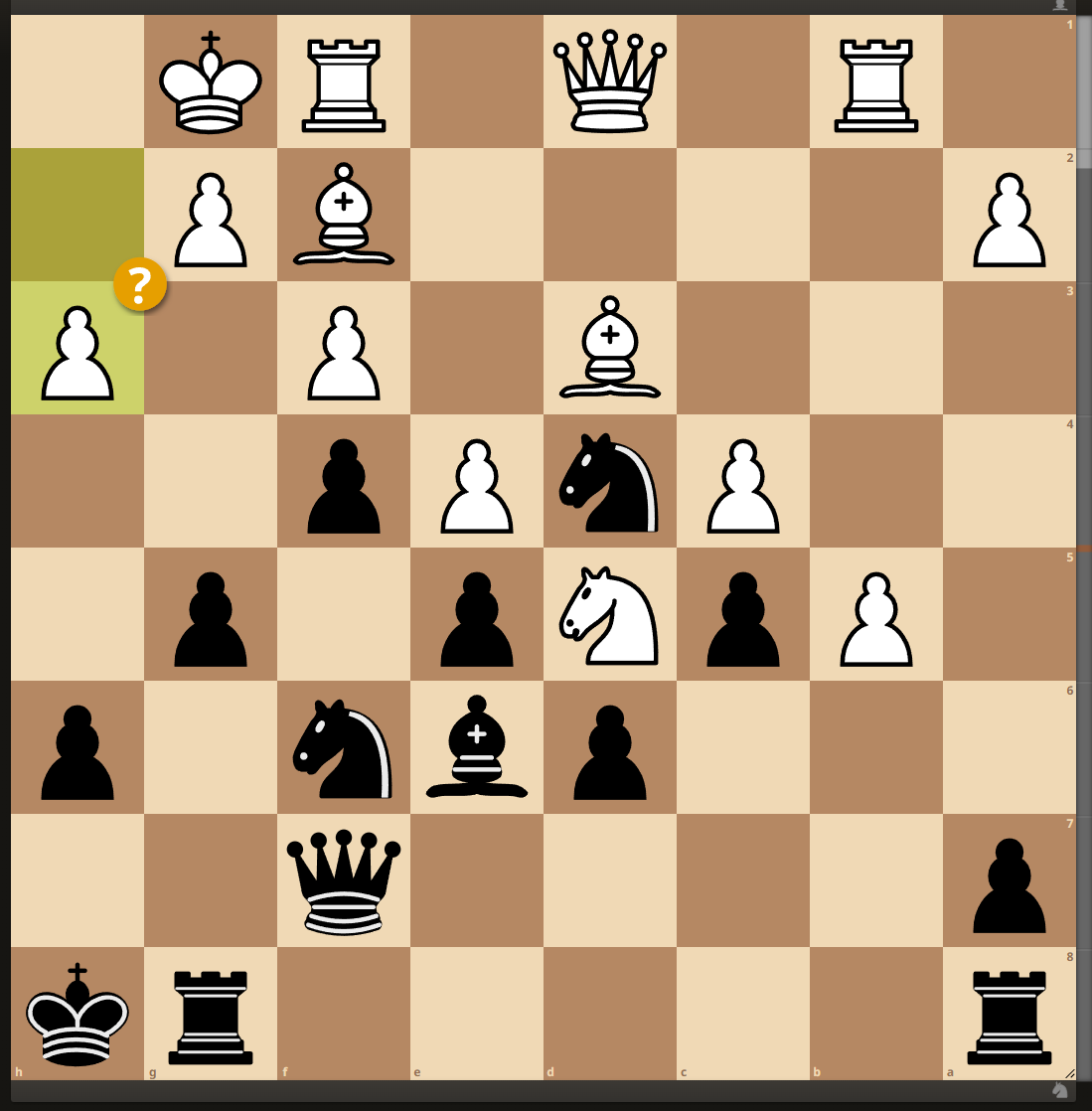
2. The Solution
Nxf3! Sacrificing the Knight.
It's a sacrifice because White has two ways to take it: his Queen can take it and his g-pawn can take it.
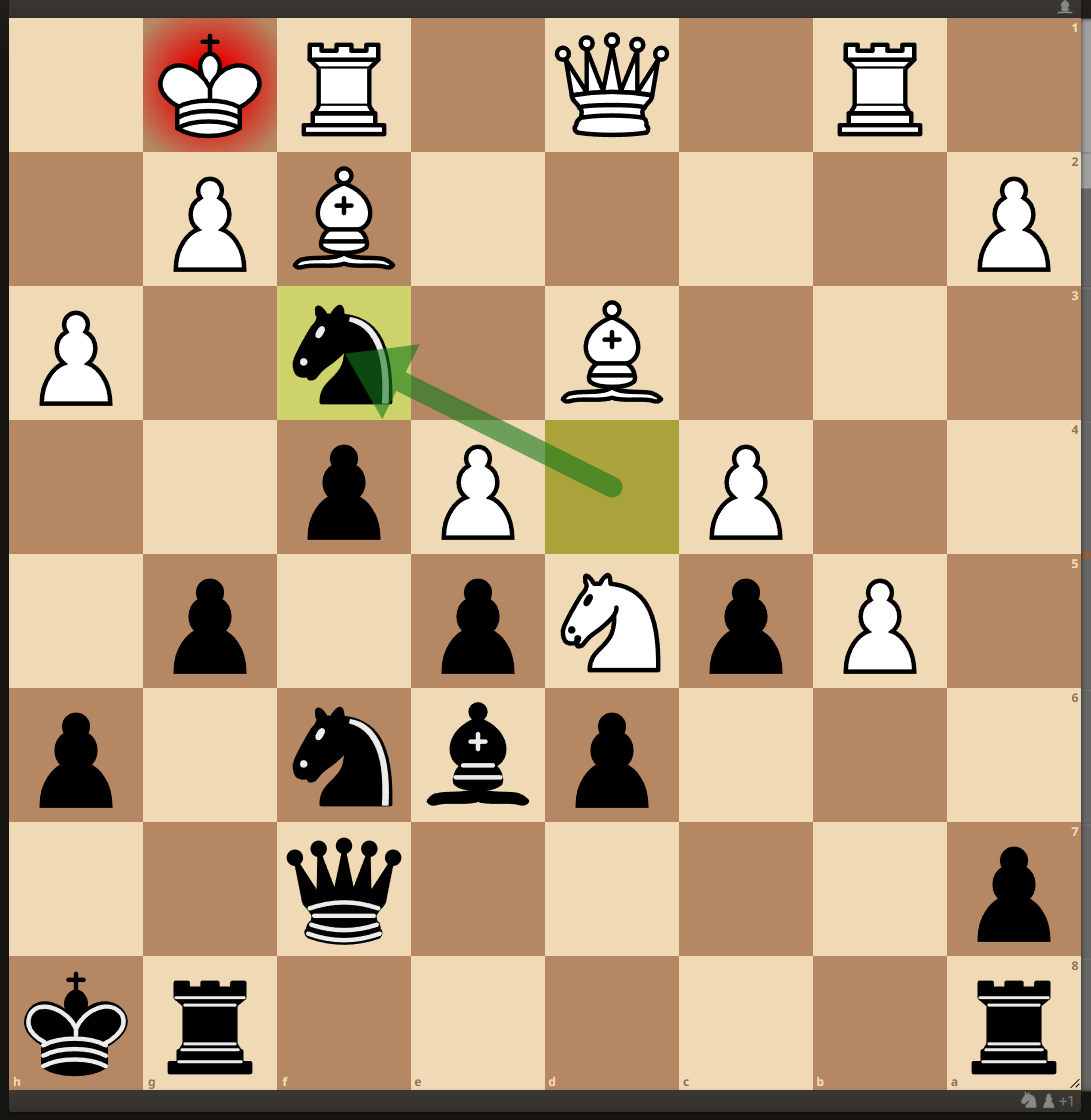
3. If the Queen takes it:
If the Queen takes it, then I push the pawn on g4, attacking the Queen and also attacking the pawn on h3, which, if I can take the pawn on h3 will give me an enormous attack because then his king is exposed to my Rook. That would be a game-over sort of attack.
But why can't he just take my pawn on g4 with his pawn on h3?
If he does that, I do Bishop takes g4 and now my Bishop is attacking his Queen and, guess what, his Queen has no safe squares to go to. He would lose his Queen. He would have to do QXB and then I do RXQ and it's game over.
If he backs the Queen away without taking the pawn on g4 then I do GxH and I have that winning attack on his King. There's no way to avoid mate in a few moves.
If he doesn't take my Knight with his Queen but instead takes with his Pawn on G2, I do NxN followed by BxH3 and once again he can't stop my pawn from getting to g4 and my Queen, Rook, and Bishop will all jump into the attack on his King and he can't avoid mate.
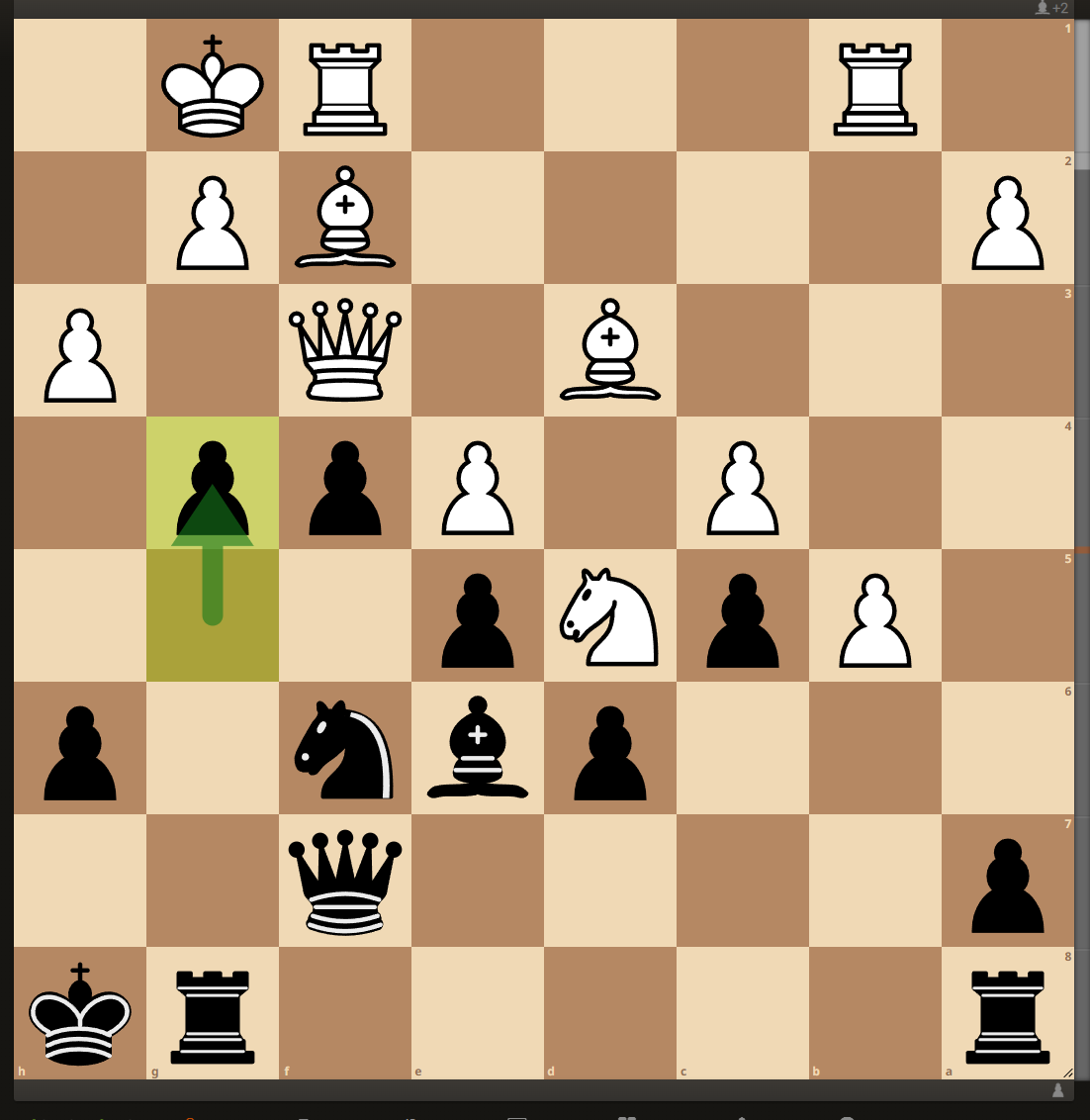
4. So what did I miss?
Again, this is the position. He had just done H3.
I had plenty of time on the clock, maybe an hour.
First, did I realize this was a critical position? A position worth spending time thinking on.
I can't remember all my thoughts while thinking of this move but I made the move h5 pretty quickly. It's an ok move but not a winning move. I just had a simple plan of moving my pawns up and opening lines. But the game took a lot longer for me to win.
I should've realized this was a critical position. Not only are all my pieces in the attack but his move "h3" was a further weakening move.
Instead of h5, I should have at least considered:
- Bxh3 (sacrificing the bishop)
- g5 (a pawn sacrifice)
- Nxf3 (knight sacrifice)
I did not consider any of these moves!
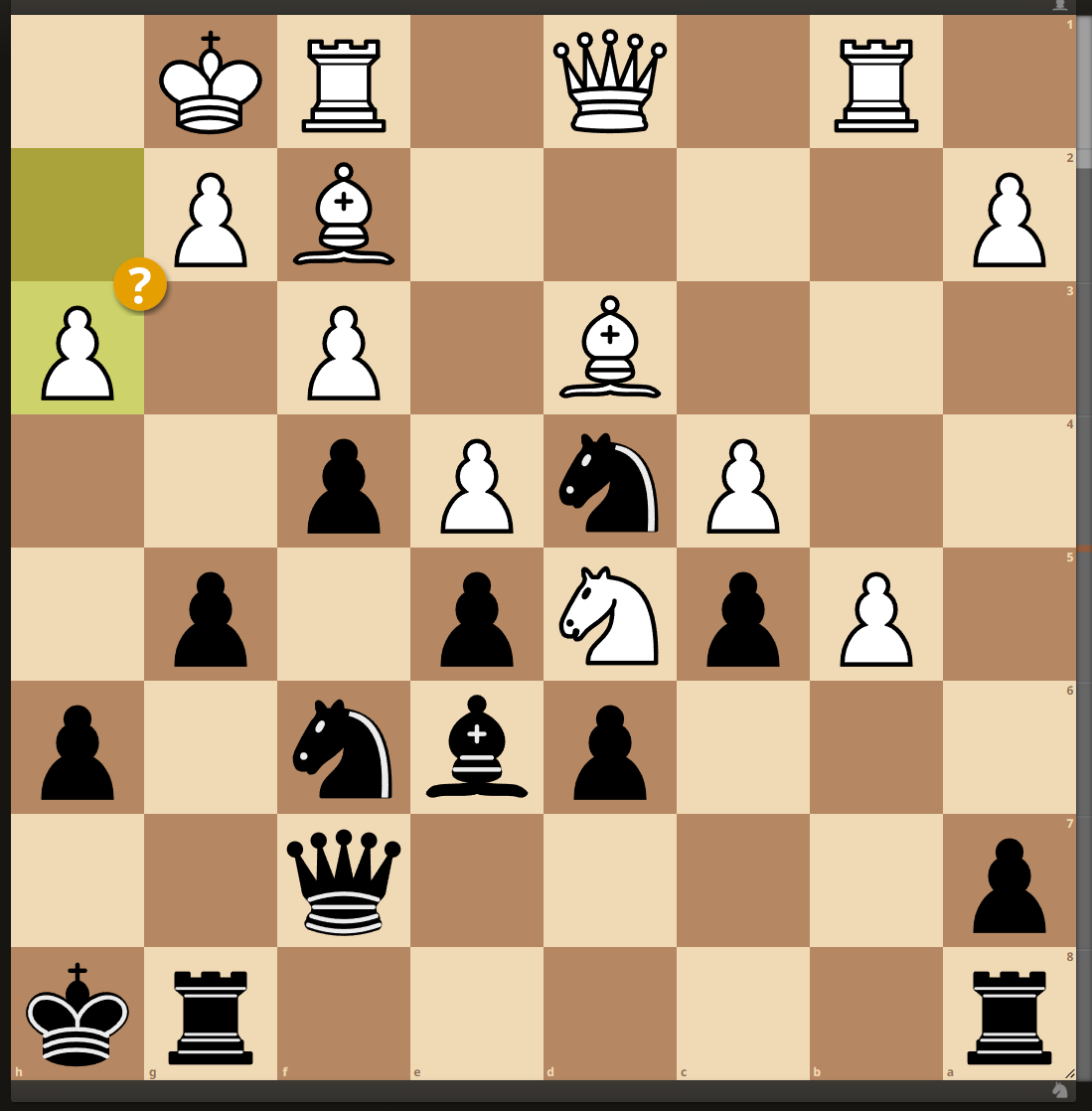
5. g4 is interesting.
This is the most direct way to take advantage of his weak move h3. Attack it immediately. It turns out this move is pretty good. Not as good as NxF3 but good. He can't stop the g file from opening, allowing my rook to directly attack his King.
There's one interesting variation.
g4 Nxf6, GxH3! (sacrificing my Knight AND my rook), NxR RxN and now he has basically no pieces defending and my Rook is on the open file attacking his King.
6. What I missed
First off, I AM LAZY.
I knew that h5 was a slow and easy way to continue to build up the attack. So rather than doing heavy calculating on the "hard" moves I decided to make an easy move.
Second, I WAS COCKY
I assumed I could do a slower plan and he would just sit back and obligingly wait to be checkmated. I underestimated him. Note, I did win, but before that happened, he had equalized the position and it was a bit of a battle. More than it should have been.
WHY WAS I LAZY AND COCKY?
He was lower rated than me. I should ignore that. I should also ALWAYS assume there is counterplay. That the other side has chances. Sometimes you do want to build up slow but I was so far ahead in advantage this was not one of those times.
It's hard to calculate sometimes. I need to calculate to the end. On intuitive moves, I can make them fast, but in critical positions I need to do the work.
I should've realized:
- I have up to five pieces attacking his king and he has, at best, one piece defending. Barely.
- when you have three more pieces attack than your opponent has defending, I should treat it as a critical position. One where I can look for a sacrifice to win.
- There's a lot of red flags in his position that could've indicated a sacrific. his pawn on h3, the rook and king looking at each other but there was one more critical thing I missed.
- I missed that Nxf3, Qxf3, g4, Hg, Bxg4 - and now his queen has no safe squares. This is not so easy to see. But I should've looked at it and found it. Let's divide it into parts.
7. Breaking it down.
I should've at least looked at Nxf3 because it's one of the moves I mention above as possible attacking moves here.
If I looked at Nxf3 I would've looked at Qxf3, the obvious capture. I might even have looked at this and then gave up at this point thinking his Queen now was in the defense.
But I should've took it one step further with g4 since in ALL of these variations that is the critical move, opening up the g-file for my rook.
If I looked at G4, then I would've looked at Hg and Bxg4 and at that point I would've seen the queen had no retreat.
8. Why didn't I look at G4 in that variation?
I think I gave up calculating when I saw Qxf3.
But perhaps I could think about these sorts of positions in this way:
- First, it's a critical position. I have 3-4 more pieces in the attack then he has in the defense.
- The main theme of the attack is getting G4 in and opening the file.
- I knew what the candidate moves were to sacrifice: Nxf3, BxF3 (a bad move), G4 (an interesting move), and the move I made (h5, a building up move)
- In each variation I should've looked at G4 as a followup since that is the thematic move this position calls for.
- And in each variation with G4 I should've kept calculating until all the captures were over. Always calculate to the end of all captures and checks. So g4, hg, Bg4 (attacking the Queen) and then I would've noticed the Queen has no retreat.
I've seen this in some other attacks I've had. Where I did not recognize the urgency for opening the critical file, even giving up lots of material to do it.
9. Here's another position where I displayed the same lack of urgency.
In this position I'm white. His king would've been safer on the kingside but he decided to castle queenside.
He just made the move a6, weakening his king but attacking my bishop. This is similar the h3 in the position before.
My goal is to open up files on the queenside for my rook and queen and use the knight to help with the attack.
Things to consider: a5 (attacking his queen but making it hard to open files, Bxc6 (removing the defender to b4, which is the pawn move which will open files), Bc4 (backing up, being overly reactive to his threat and ignoring that his threat weakened his king).
I chose the latter and the game was equal at that point. I ended up losing the game.
So again I should've said:
- critical position: My king is safe, my pieces are circling his king, he weakened his king with a6, I have to remove the defenders of his king (and his b4 square), and get my pieces over to attack his king.
This position, again, is not as attacking-oriented as the one before but there are still things to do.
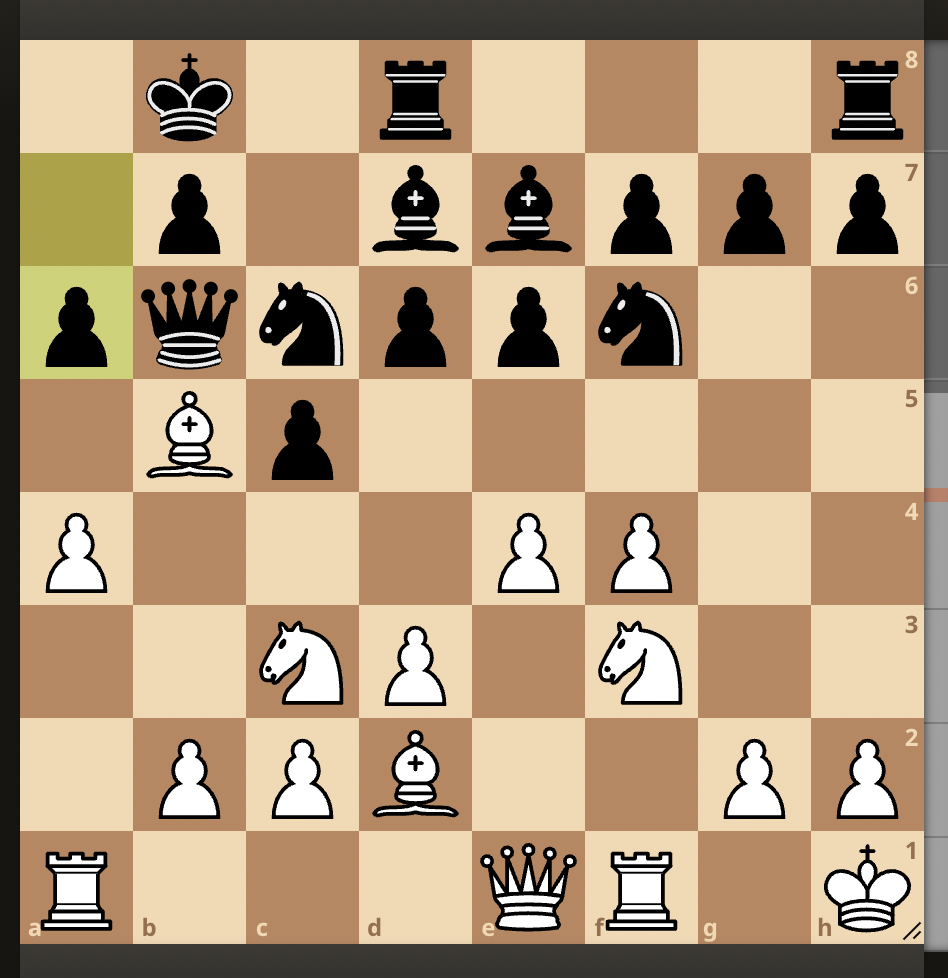
10. Opening the file
Simply taking his Knight with my Bishop and then immediately doing b4. He has to take my pawn with his c pawn and now that opens the diagonal for my bishop to move to e3 and attack his queen. Sometimes pawn breaks open files, sometimes diagonals. This one will probably do both.
At the very least I get a bunch of moves to attack and I only had to spend a pawn that I will probably make back.
Here's the position if I had taken the knight and done an immediate b4.

11. What happens next?
If cxb, I attack the queen with Be3, then Qa5, Ba7+, Kc8, Nfd4.
This is just one sample cariation but we can see the result. I have at least five pieces in the attack vs he has two pieces defending (his Queen and bishop). I'm down a pawn but it's worth it. White is probably winning here.
I didn't make the move. Again I should've thought:
- critical position
- remove the defender of b4
- b4
- Move pieces closer to the king.
Note in this position he can take my knight with his a pawn. But if he does, I do axb and now my rook is attacking his queen and my b pawn is attacking his bishop so I win back the bishop instantly and have an open file for my rook.
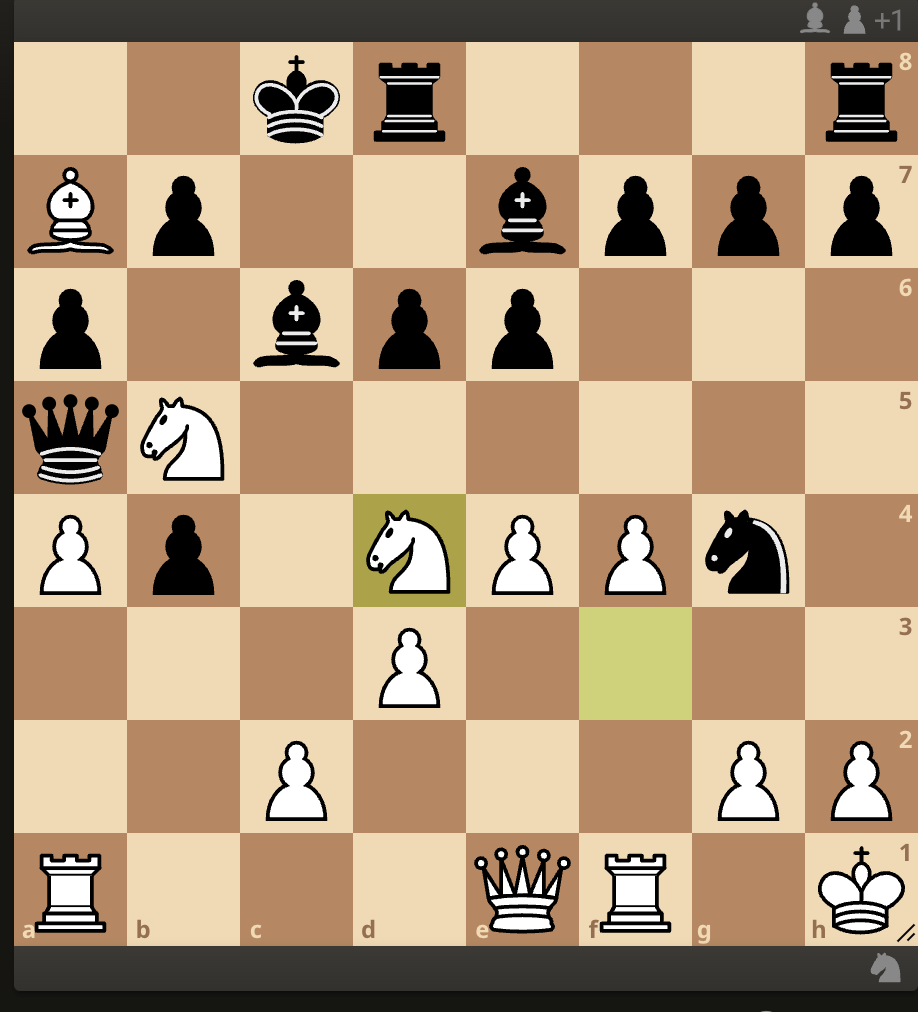
12. Yet another similar position where I made the wrong move
Similar open to the first position mentioned above. Both games started with a King's Indian Defense. I had just made the move g4-g3. If he had taken with his h pawn then he opens up the file with his king and he will quickly lose. He did Bg1 and his hope is to close things up with h3 and it appears his king is in an impregnable fortress.
This is a critical position. How to continue the attack?
I have four pieces that quickly get into the attack. He has one (the Bishop on g1) and maybe 2 (the other bishop).
I thought about doing Bh3. It stops his pawn from closing things up with h3. But he can just defend with Bishop g1.
So I started thinking of a long term plan:
- Get my Rook on the g-file: RF7, Bf8, Rg7 (three moves). There's a saying: "Long variation, wrong variation".
- Get knight on G4 to maybe sacrifice on h3.
But this plan is too slow. I made the move Rf7 and the position was immediately equal. He will be able to lock things up and the game ended in a draw. Very painful for me as I knew I was winning here and this was my first tournament in 25 years. I wanted to win but ended up with six losses and three draws.
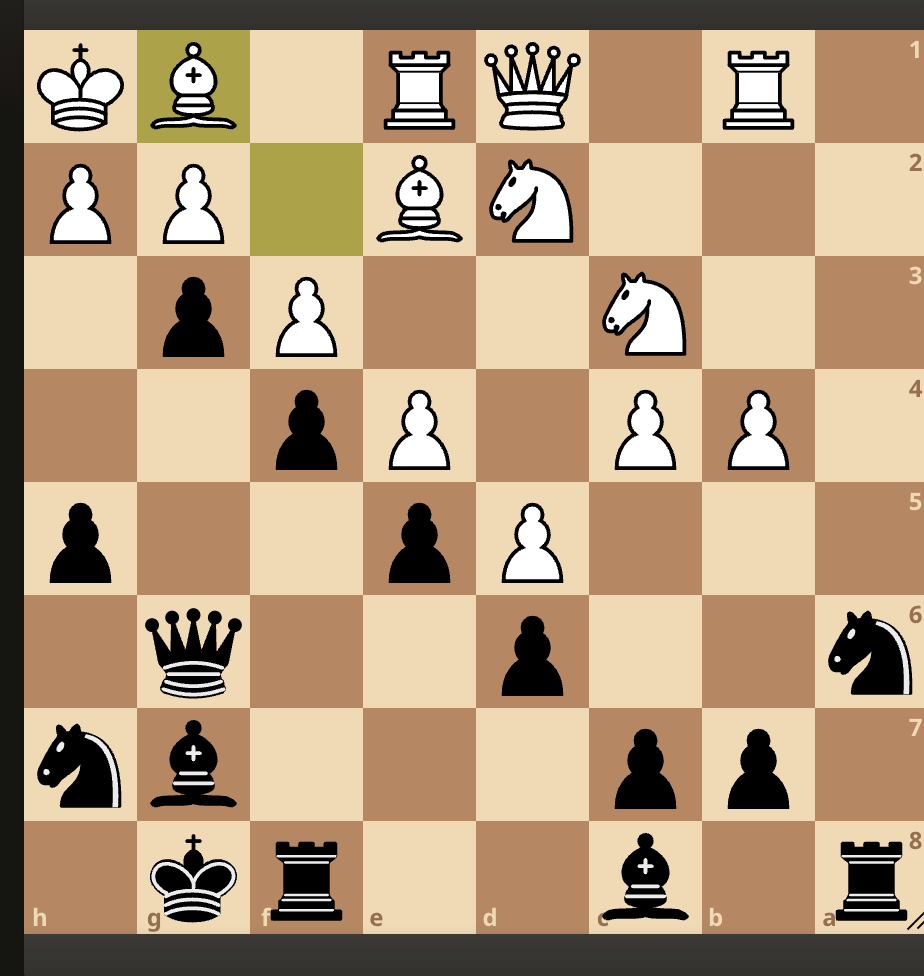
13. The right approach
My goal was to break things open as quickly as possible.
So the correct move is h4. But I was afraid he would do h3 and then things would be locked up.
But ...h4. h3 (seemingly locking it all up), Bxh3! (sacrificing the bishop and opening the precious g2 square. And if Gh, then g2 Kh2 and Qg3, Checkmate!
I missed it!
I saw h4 h3 but did not look at Bxh3. Why didn't I look at it?
In critical positions:
- look at every sacrifice next to the king.
- calculate to the end of captures and checks
- the critical theme here is opening up g and/or h files and getting access to the squares right arount the king.
Worth noting that one of the unique concepts AlphaZero has taught simple humans is that king mobility is highly valued. Here the king is hemmed in by his own pieces and I have a Queen circling around ready to checkmate.
After Bxh3, if he does not take the bishop, I just pull it back and then do h3 and he is defenseless.
14. Summary
Sometimes a good slow buildup is called for.
But:
- if i have rooks in place to open files on the king
- 2-4 most pieces attacking than defending
- a weakening move around the. king
- look at all the sacrifices
- think of the thematic move in the position that will have to happen to open things up (like g4 in the first position)
- keep calculating through all the captures and checks.

No comments.